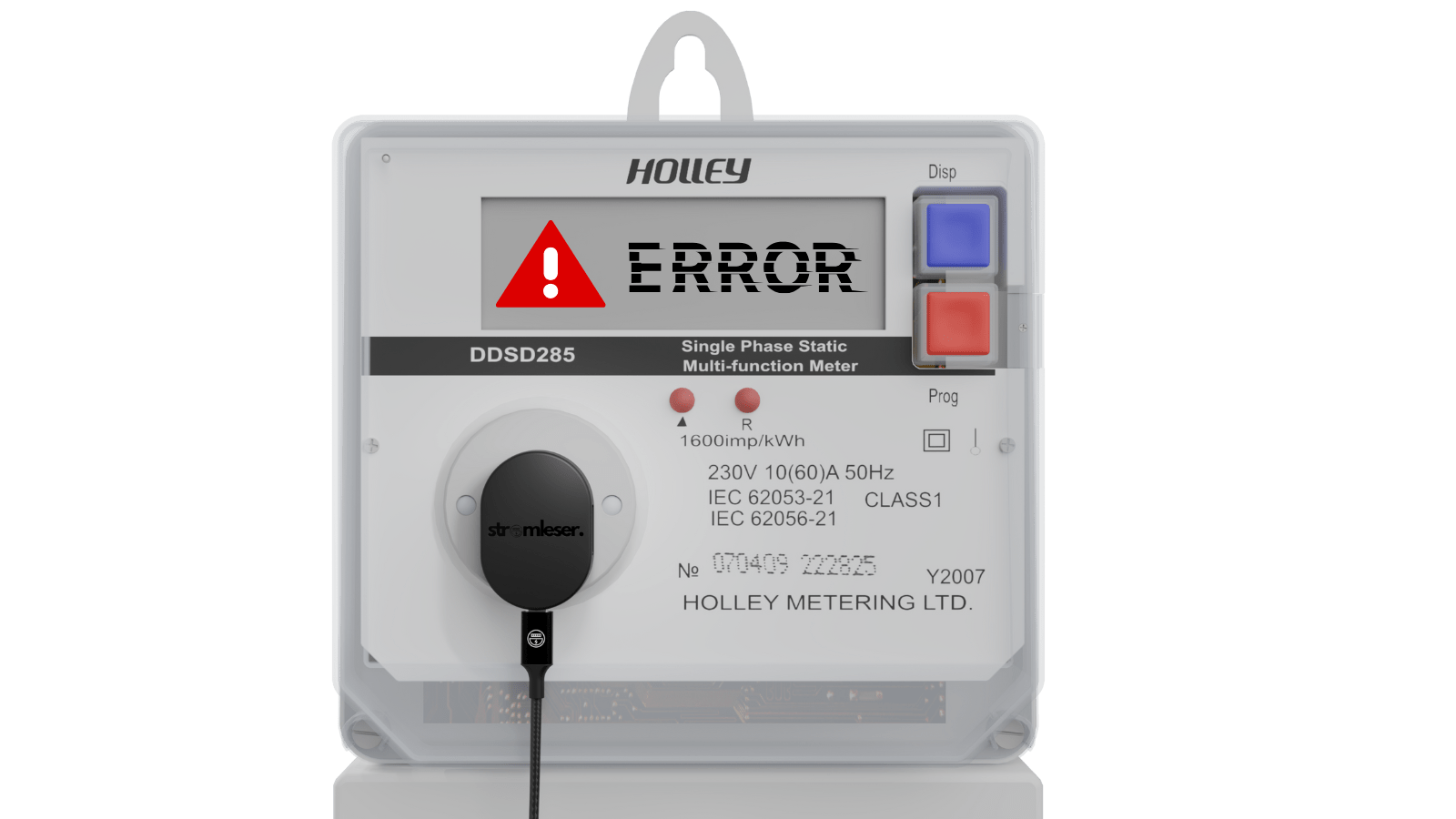Modern measuring device, digital electricity meter or smart meter – what is the difference?
Electricity meters are a key component of every household. They record your electricity consumption, enable billing with your energy supplier, and help you save electricity. Digitalization has significantly changed the way electricity is measured – and now offers you many new possibilities.
There are three types of counters to choose from:
-
The classic Ferraris counter
-
The modern measuring device (digital electricity meter)
-
The intelligent measuring system – the smart meter
In this blog article, you will learn what distinguishes these devices, how they work, how you can read them, what costs are involved, and when installation is mandatory.
Currently, there are still over 23 million electromechanical meters (Ferraris meters) in operation in Germany. These compare to approximately 21 million modern metering devices and only about 568,000 intelligent metering systems (smart meters) – according to figures from Statista (2023). This shows that the nationwide rollout of smart meters is still in its early stages.
What is a Ferraris counter – and why is it still common?
The Ferraris meter is a mechanical electricity meter that operates according to a simple principle: A magnetically driven disc rotates depending on the electricity consumed. The meter reading is read manually using a counter.
Advantages:
-
Simple structure
-
No own electricity consumption
-
Robust and durable
Disadvantages:
-
Only manual reading possible
-
No storage or digital processing of data
-
No smart home compatibility
What can a modern measuring device (digital electricity meter) do?
This modern measuring device, also known as a digital electricity meter, is the successor to the Ferraris meter. It displays the current meter reading on a digital display and also stores time series. This gives you a precise overview of your energy consumption history —for example, on a daily or weekly basis. Feed-in of solar power is also recorded.
Advantages:
-
Exact consumption display
-
Overview of consumption behavior
-
Basis for the Smart Meter
-
Feed-back of solar power can be read directly on the meter
Disadvantages:
-
No automatic data transfer without additional device
-
No direct access via app or cloud
💡 Tip: With the stromleser You can still track your electricity consumption in real time on your smartphone – without the need for an additional gateway.
How does a smart meter work – and what benefits does it offer you?
In the legal sense, a smart meter consists of two components:
-
a modern measuring device (i.e. a digital electricity meter)
-
and a certified Smart Meter Gateway, a communication unit between the meter and the metering point operator
Only this combination forms a so-called intelligent metering system (iMSys). This system automatically transmits your electricity consumption, encrypted, and at regular intervals, to the meter operator. Remote meter reading eliminates the need for manual meter readings – data transmission is automated. It also meets stringent data protection and IT security requirements.

Advantages of an intelligent metering system:
-
Remote reading without a reading appointment
-
Live data access via app or web portal
-
Integration into smart home systems possible
-
Basis for dynamic electricity tariffs
Disadvantages:
-
Higher costs compared to simple digital meters
-
Some users express data protection concerns
Electricity meters in comparison
| feature | Ferraris counter (analog) | Modern measuring device (digital) | Intelligent measuring system (smart meter) |
|---|---|---|---|
| function | Mechanical function, based on rotating disc | Electronic function with digital measurement | Combined function of meter and gateway |
| Advertisement | Mechanical counter | Digital display with unit in kWh | Digital display, online access possible depending on the provider |
| Data collection | Only current status | Time series stored locally | Time series saved + automatic transfer |
| Reading | Manually by user or meter reading service | Manually by user (display button) | Automatic – no manual reading necessary |
| communication | ❌ No | ❌ Without additional equipment no | ✅ Via gateway with secure data transmission via power line |
| Smart home compatible | ❌ Not possible | ❌ Only via additional module | ✅ Integration into the smart home possible |
| Use today | Obsolete, will be replaced | Standard for new meters | Mandatory in certain cases, e.g., for PV feed-in |
| Additional measured values | ❌ Not available | ✅ Display of consumption & feed-in | ✅ Measurement of active power, peak loads & feedback |
| technology | Without sensors | Optional current sensors (e.g. current transformers) depending on the version | Integrated current transformer for precise real-time data |
| Meter consumption | Low self-consumption through mechanical measurement | Low self-consumption (~44 kWh/year) | Self-consumption higher (~88 kWh/year including gateway) |
| Disposal | Only limited in circulation | Available in large quantities | Not yet available nationwide, but growing |
| Manufacturer / supplier | Various, hardly produced today | Many manufacturers on the market | Few certified manufacturers due to legal requirements |
| Further information | Simple assembly without additional technology | Also provide daily, weekly and monthly consumption | Additional grid-related information such as voltage, frequency |
| Suitable for billing | Only current invoice, no comparison data | Annual course for more precise calculation | Basis for dynamic tariffs & automated invoices |
Electricity meter: Costs at a glance
Prices vary considerably depending on the design and scope of services.
-
Ferraris counters: free of charge (if still available, but will no longer be installed)
-
Modern measuring device: approx. 20 €/year
-
Smart meter: approx. €60–100/year
These costs cover the metering service, the operation of the technology, and, if applicable, remote reading. For smart meters, there may be additional one-time installation costs.

Installation and legal obligation
The installation of modern meters is regulated by the Metering Point Operation Act. This regulation is based on nationwide requirements and is being implemented gradually. All old meters must be replaced by 2032 at the latest. Switching to a smart metering system is mandatory if:
-
your annual consumption is over 6,000 kWh
-
you operate a solar system or a CHP plant
-
you use a controllable consumption device (e.g. heat pump)
The responsible meter operator will contact you in good time regarding the installation.

What should be considered when installing a new electricity meter?
Before installation, the meter operator will check whether your meter cabinet is suitable. Your meter cabinet often requires a bit more space . In some cases, a minor structural modification is necessary to install digital meters. Installation is carried out by specialists and usually takes less than an hour. Depending on the manufacturer, the electricity meter's features and functionality may vary slightly. You will then receive a handover report with the current meter reading.
Reading the electricity meter – this is how it works
Ferraris counter:
-
Read the meter reading on the mechanical counter
-
Only write down the first five digits (before the decimal point)
Digital measuring device:
-
Activate display (press button)
-
Read consumption at “1.8.0”
Smart Meters:
-
Data is transmitted automatically
-
You can view your consumption at any time in the app
📌 Ensure all devices have the correct calibration – this is the only way to ensure your bill is legally compliant. Regular meter readings will help you control your electricity costs.
You can find more on this topic on our blog:
Reading the electricity meter correctly – explained step by step
How does the electricity meter affect your electricity bill?
Your electricity meter provides the basis for your electricity bill. Regularly checking the current meter reading and comparing it with your own usage can quickly identify high consumption. By accurately comparing your electricity consumption with your usage, you can better understand fluctuations and take targeted countermeasures. This allows you to specifically reduce energy guzzlers and lower your monthly costs.
Special cases: intermediate meters & industrial electricity meters
intermediate meter
Used in apartment buildings, shared apartments, or outbuildings, they record partial consumption, e.g., for heating systems or communal lighting.
Industrial electricity meters
In industry, devices with advanced measuring functions (e.g., voltage, frequency, power) are often used. For households, a digital meter or smart meter is usually sufficient.
Frequently asked questions about electricity meters
Do I need to replace my old electricity meter?
Yes – by 2032 at the latest. In some cases earlier, for example in the case of high electricity consumption or a solar system.
What happens to my old device?
It is removed, disposed of and documented during installation.
Are new devices calibrated?
Yes – all electricity meters must be calibrated by law.
Do I need a smart meter?
Not necessarily. But it offers many advantages—especially when fuel consumption is high.
Is there any support or advice available?
Some municipalities offer free energy consulting. Subsidies are usually tied to larger energy systems.
The future of electricity meters: Where is development heading?
In the future, electricity meters will become even smarter: They will become part of intelligent grids, automatically control household appliances, and assist with the targeted charging of electric cars or storage devices. The smart meter will thus become the control center of your energy consumption.
Save electricity with digital consumption data: How to use your meter cleverly
A modern electricity meter—whether a modern measuring device or a smart meter—provides you with much more than just a meter reading. Regularly analyzing your consumption data can help you actively save electricity. Knowing when and where energy consumption is particularly high allows you to respond in a targeted manner.
Typical energy guzzlers in the home, such as old refrigerators, instantaneous water heaters, or standby devices, are identified more quickly. Digital meters allow you to analyze your electricity consumption by time of day or usage patterns. In conjunction with the stromleser ( electricity meter) and the associated stromleser app, you can even view your data live on your phone—and respond immediately to unusual consumption.

Many households underestimate how much electricity is wasted unnecessarily – for example, due to forgotten lighting, poorly adjusted heating systems, or inefficient household appliances. Regularly checking the current meter reading and comparing it with previous months or the previous year creates transparency here.
Tip: In many cities, consumer advice centers or energy providers offer free consultations that analyze your consumption and identify potential savings. Your electricity meter thus becomes a tool for conscious, sustainable energy use – and helps you specifically reduce your costs.
Conclusion: Your electricity meter makes the difference
Whether Ferraris, digital, or smart – your electricity meter helps you save electricity and reduce costs. With a modern metering device or a smart meter, you get more control, more overview, and greater future security.
Make your consumption visible – and reduce your electricity costs permanently.





Leave a comment
This site is protected by hCaptcha and the hCaptcha Privacy Policy and Terms of Service apply.